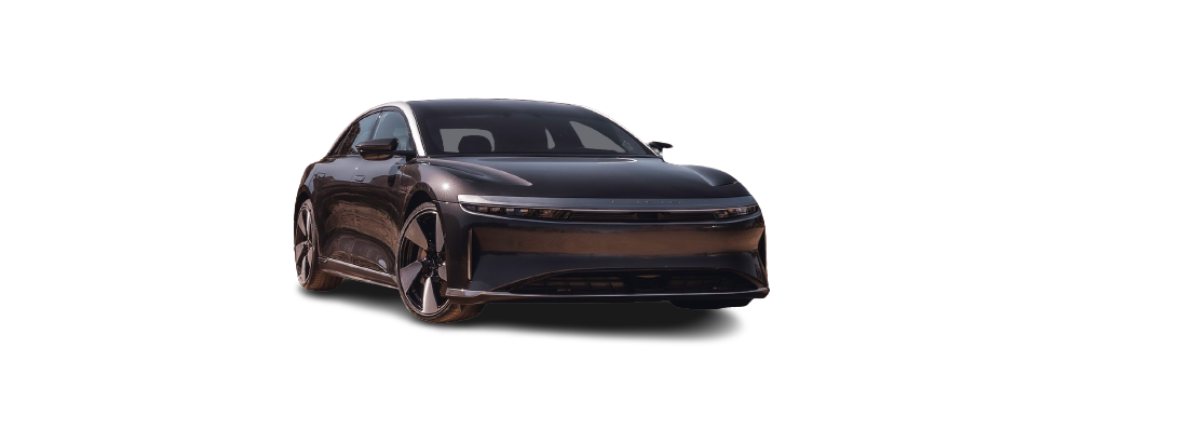2022 Lucid Air Child Safety Seats
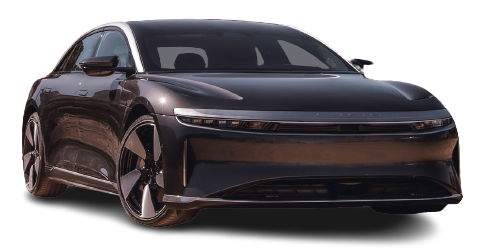
Guidelines for Seating Children
All child restraint systems are designed to be secured by lap belts or the lap belt portion of the lap-shoulder belt.
- WARNING: Do not use a child restraint on a seat with an operational airbag in front of it. There is a risk of death or serious injury when the airbag deploys. Crash statistics show that children are safest when properly restrained in a child or infant restraint system that is secured in a rear seating position.
- WARNING: Do not use a forward-facing child seat until the child using it is above the minimum weight of 20 Ib (9 kg) and able to sit up unaided. Up to the age of two years, a child’s spine and neck are not sufficiently developed to avoid injury in a frontal impact.
- WARNING: Do not allow a baby or infant to be held or carried on the lap. The force of a crash can increase effective body weight by as much as 30 times or higher, depending upon the crash severity, making it impossible to hold onto the child. At all times, restrain children in age- and size-appropriate child seats to reduce the risk of injury in a crash.
Lucid designed and fitted your vehicle’s seat belts for adults and larger children. For the safety of infants and children under 12, it is important to restrain them in a suitable child safety seat appropriate for their age and size. Fit a child seat that has been approved for use in your vehicle. Follow the manufacturer’s fitting instructions exactly. You can contact Lucid for a list of approved child seats. See Contacting Lucid Motors. The rear seat supports both iSize and SOFIX child seats.
NOTE: Legislation that governs how and where children should be carried when traveling in a vehicle is subject to change. It is the responsibility of the driver to comply with all current regulations.
WARNING: Do not use a rear-facing child restraint on a seat protected by an airbag in front off it. In the event of an airbag deployment, this could lead to serious injury or fatality of a child seated in a front seat.
While it is possible to disable the front passenger airbag, this should not be relied upon to protect your child. Lucid strongly advises that you DO NOT use a rear-facing child seat on the front passenger seat.
Choosing a Child Safety Seat
WARNING: Children age 12 and under should ride in the rear seats using a child safety seat suitable for the child’s age and weight.
WARNING: Children should ride rear-facing and use the child restraint’s integrated 5-point harness in conformity with possible local laws and the recommendations of the Child Safety Sea manufacturer. Check to make sure children riding in your vehicle are riding in the appropriate child restraint.
Child restraints accommodate different ages, sizes, and weight ranges of children. Many child restraints are designed to allow children to ride rear-facing. Carefully read and follow all instructions and warnings provided by the child safety seat manufacturer, and on all labels attached to the child safety seat.
Use the following tables to help you determine the best type of restraint for a child. There are also some general rules for each category.
- U: Universal belt rearward child restraint system
- UF: Universal belt forward child restraint system

- IL: Any semi-universal LATCH/ISOFIX child restraint system
- IUF: Any universal LATCH/ISOFIX child restraint system
Seating Larger Children
- WARNING: Make sure the booster seat or vehicle seat properly supports the child’s head. The seat back must be at or above the center of the child’s ears.
- WARNING: Make sure to properly fit the vehicle seat belt onto the child with the shoulder portion of the belt away from the face and neck and the lap portion of the belt lying across the child’s lap, not over the stomach.
- WARNING: When a booster seat is not in use, do not leave it loose in the vehicle. In a sudden stop or collision, it could strike the occupants or seat backs and cause serious injury. Secure the booster seat or remove it from the vehicle entirely.
If a child is too big to fit into a child safety seat but too small to safely fit into the standard seat belts, use a booster seat appropriate for the child’s age and size.
Carefully read and follow all the instructions, warnings, and labels attached to the booster seat and provided by the booster seat’s manufacturer.
Always check and adjust every child’s seat belt for every trip.
Children who are big enough to wear the shoulder belt properly and comfortably, and whose legs are long enough to bend over the front of the seat when their back is against the seat back, should use the seat belt in a rear seat.
Installing Child Safety Seats
- WARNING: When installing any child safety seat, it is strongly recommended to always remove the head restraint from the vehicle seat.
- WARNING: Correctly anchor child safety seats. Incorrectly anchoring the child safety seats may result in a significant risk of injury to the child in the event of a collision or emergency braking
- WARNING: After installing a child safety seat in the vehicle, do not adjust the vehicle seat, as this can loosen the safety seat attachments. Remove the safety seat before adjusting the vehicle seat position. When the vehicle seat has been adjusted, reinstall the safety seat.
Not all child restraint systems are the same, and they do not all install in the same way. There are two types of installations:
- Those that you secure to the vehicle seats by the seat belts; and
- Those that you secure using LATCH/ISOFIX child seat anchor points built into the rear seat frame.
All new and most older child restraint systems also use an upper tether strap that attaches to an anchorage point on the parcel shelf.
NOTE: Check the manufacturer’s instructions to see which installation method to use. For some systems, you can use either installation method. Always follow the child restraint manufacturer’s instructions and recommendations.
Installing LATCH or lSOFIX Child Seats
- WARNING: Child seat anchorages are designed only to withstand the loads imposed by a correctly installed child safety seat. Under no circumstances are they to be used for adult seat belts, harnesses, or attaching other items or equipment to the vehicle.
- WARNING: Never attach two child safety seats to one anchor point. In a collision, one anchor point may be incapable of securing both seats.
- WARNING: If the restraint is not correctly anchored, there is a risk of serious injury to the child in the event of a collision or emergency braking.
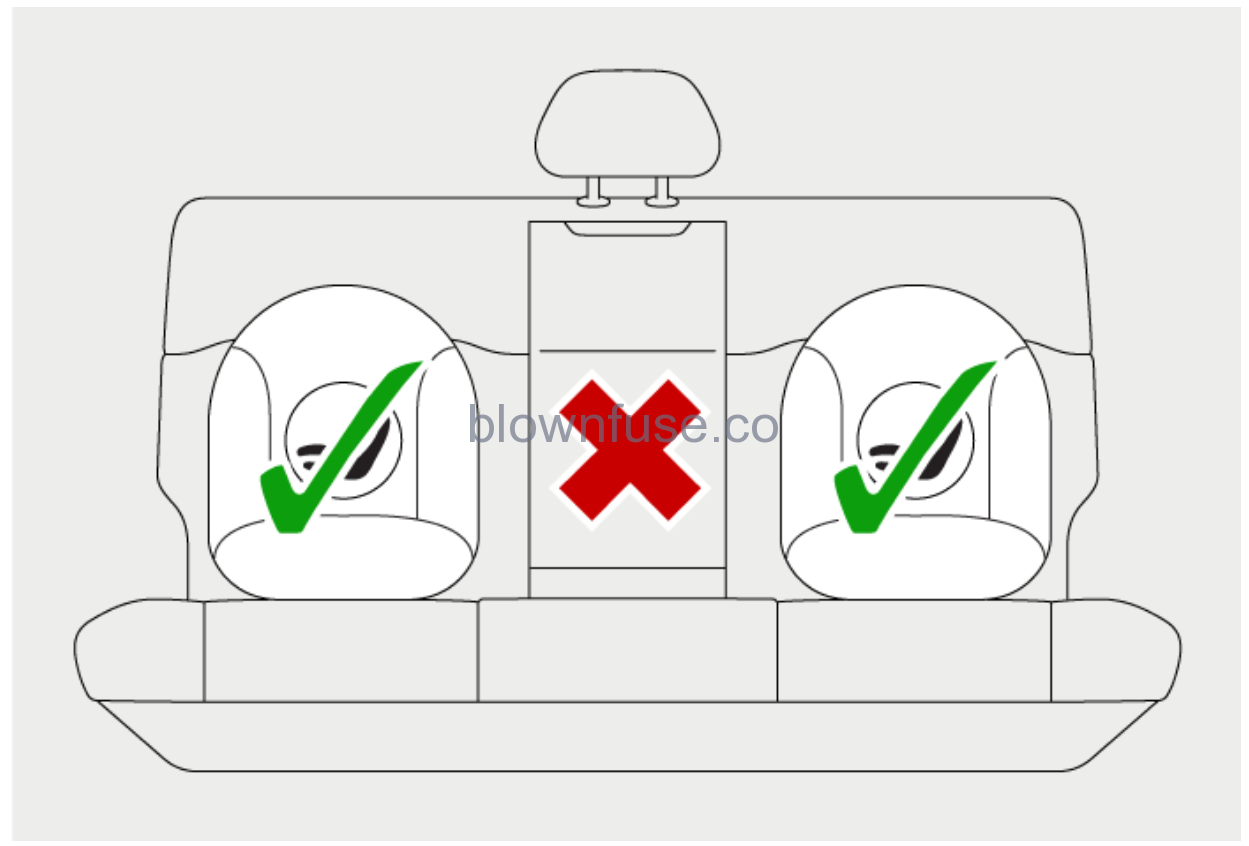
The outer rear seats are equipped to accept LATCH/ISOFIX restraints.
NOTE: Only a seat belt retained child seat can be used in the center rear seating position.
To install a LATCH/ISOFIX child seat:
- The lower LATCH/ISOFIX anchorage points are located between the seat back rest and rear cushion, indicated by child seat identification tabs on the seat.
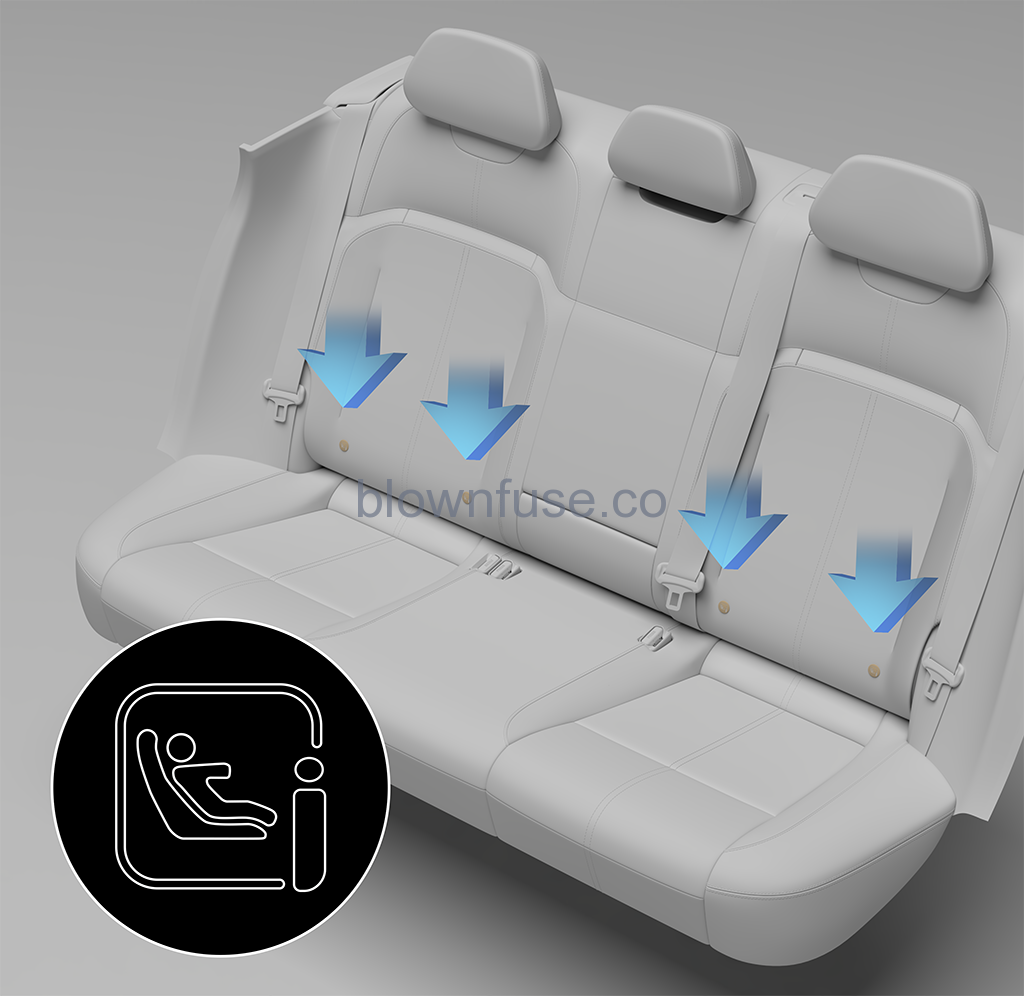
- Position the child seat on the vehicle seat.
- Attach the child seat latches onto the LATCH/1sOFIX lower anchor points, following the manufacturer’s instructions to connect and tighten them.
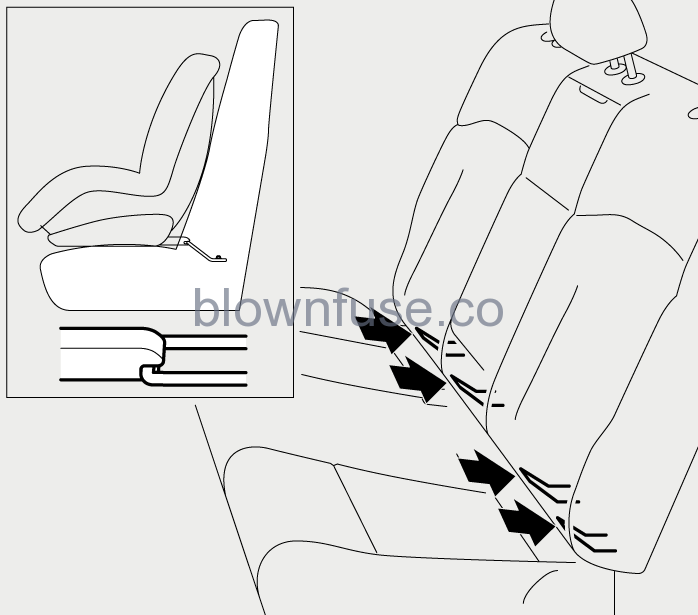
- Securely connect and tighten the latches. To do this, attempt to pull the child seat away from the vehicle seat and twist it from side to side. Even if the child seat appears secure, check the anchor points visually to make sure for correct attachment. If the child seat moves more than 1 inch (2.5 cm) from side to side or front to back, it is too loose. If you cannot tighten the latches any further, try a different recommended seating location or another child safety seat.
- If the child seat has an upper tether provided, fit and tighten the upper tether correctly. See Attaching Upper Tether Straps
WARNING: When the combined weight of the child plus the child restraint is more than 64 Ib (29 kg), you should not use the lower LATCH/ISOFIX anchors with the child seats or booster seats that have an integrated safety belt. Use the seat belt instead.
Installing Seat Belt Retained Child Seats
First, make sure that the child falls into the correct weight range for the child seat being used. See Choosing a Child Safety Seat.
The following is a general procedure for installing a seat belt retained child restraint. You should always read and follow the instructions provided by the manufacturer of the child safety seat you are installing.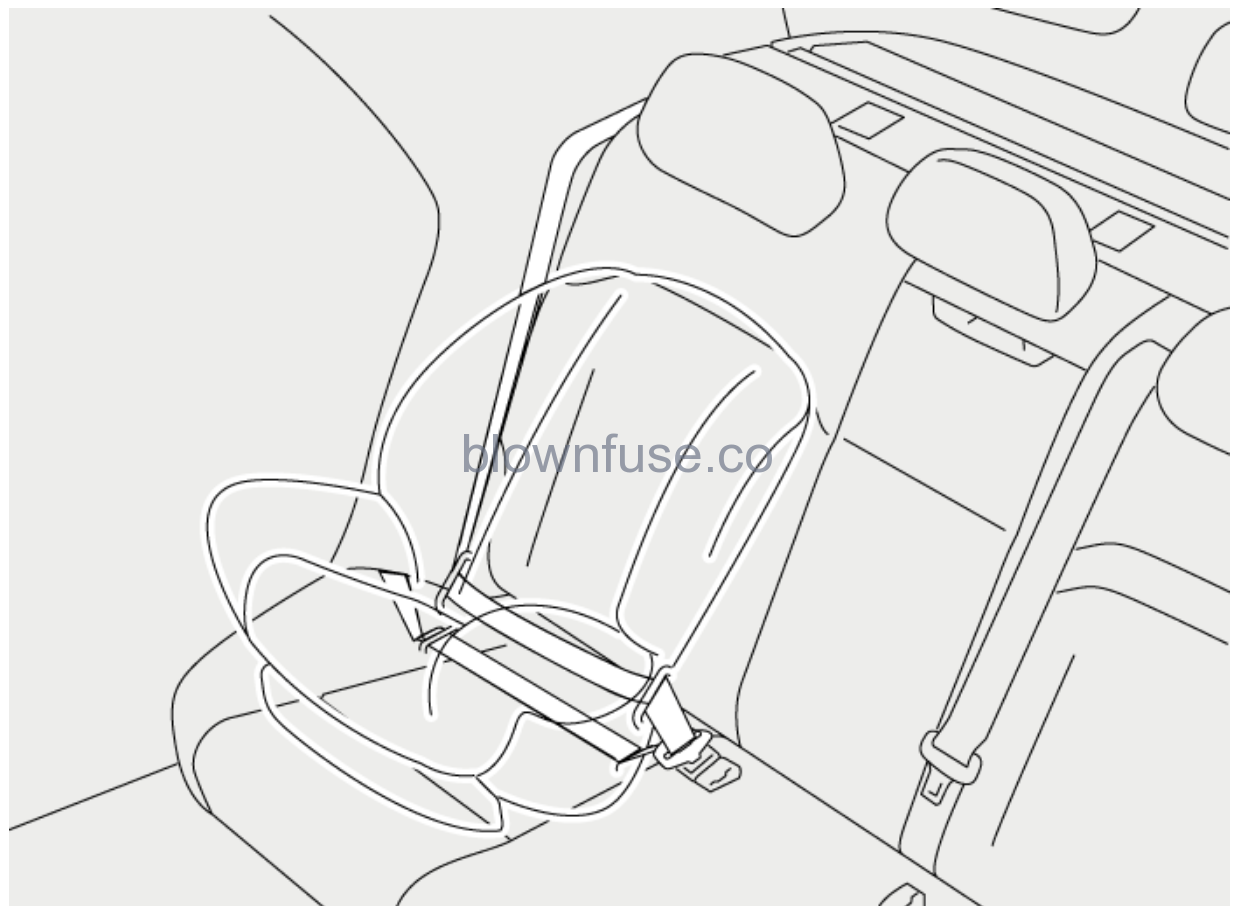
- Place the child safety seat in the vehicle seat and fully extend the seat belt to engage the ALR. See Automatic Locking Retractor (ALB). Route the seat belt to secure the child safety seat and secure the buckle following the manufacturer’s instructions.
- Allow the seat belt to retract. Firmly push the safety seat into the vehicle seat and remove all slack in the seat belt.
- If the safety seat has an upper tether, attach it to the back of the vehicle seat. See Attaching Upper Tether Straps.
- Check that the safety seat is not loose. Do this by holding the safety seat by the belt path and sliding it side to side and front to back.
If it moves more than 1 inch (2.5 cm) from side to side or front to back, then it is too loose. If you cannot tighten the safety seat any further, try a different recommended seating location or another child safety seat.
Attach a child safety seat using the lap belt or the lap belt portion of a lap-shoulder belt in accordance with the instructions of the manufacturer of the child seat.
WARNING: Children could be endangered in a crash if their child restraints are not properly secured in the
vehicle.
Attaching Upper Tether Straps
There are upper tether strap anchors provided for each rear seating position.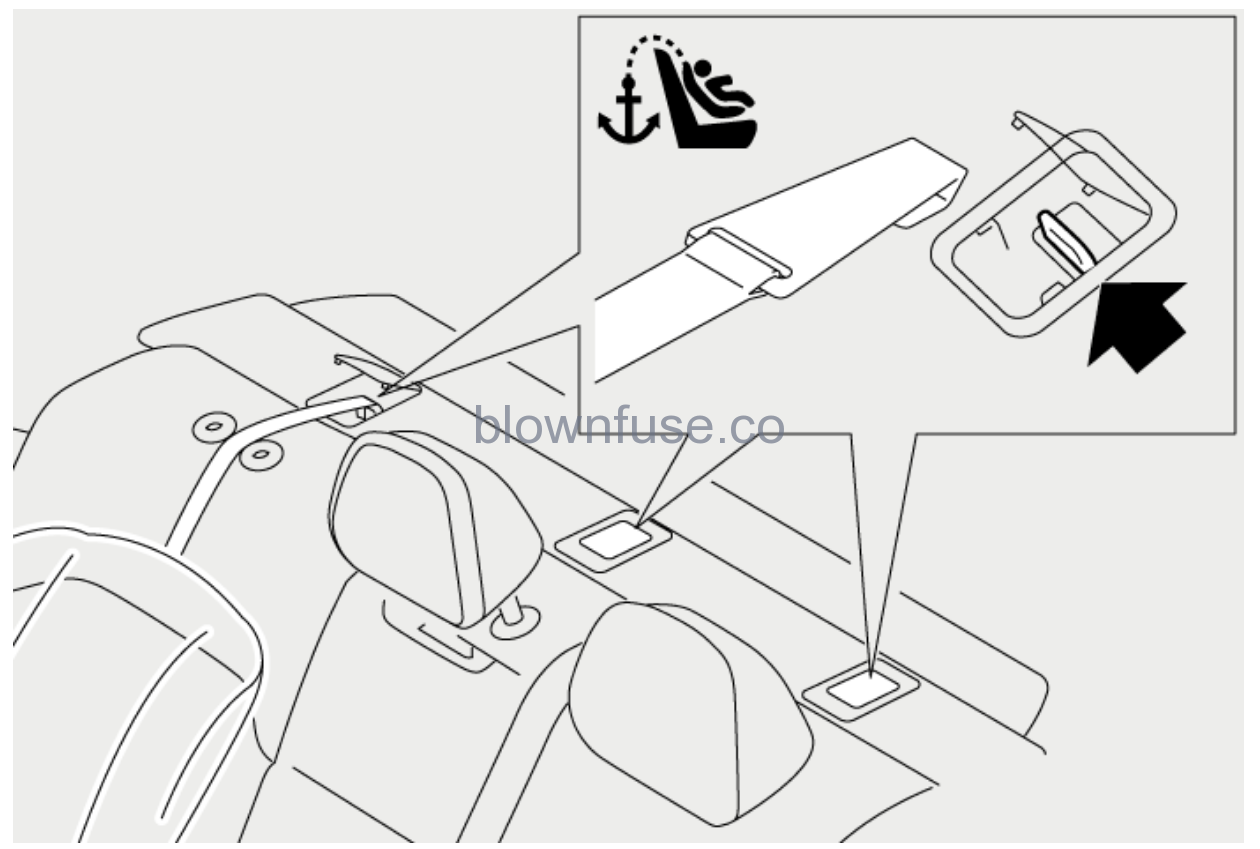
To attach the tether straps:
- Remove the head restraint from the vehicle seat. See Adjusting the Head Restraints.
- Pass the tether strap over the top of the seat.
- Open the protective cover located behind the headrest.
- Attach the tether strap hook to the tether anchor point on the parcel shelf. Ensure that the tether strap hook is facing the correct way according to the manufacturer’s instructions and that the strap is not twisted.
- Tighten the tether strap according to the manufacturer’s instructions
Child Safety Seat Warnings
- WARNING: To ensure children are safely seated, follow all instructions provided in this document and by the manufacturer of the child safety seat.
- WARNING: Always check and adjust every child’s safety harness or seat belt for every trip.
- WARNING: Avoid dressing the child in bulky clothing (such as thick or puffy coats) and do not place any objects between the child and the restraint system, as these practices could introduce slack to the restraints and reduce their effectiveness.
- WARNING: Children should never be left unattended in the vehicle, even when secured in a child safety seat.
- WARNING: According to collision statistics, children are safer when properly restrained in the rear seats than in the front seat.
- WARNING: Never use seat belt extenders on a seat belt that is used to install a child safety seat or booster seat.
- WARNING: Regularly inspect and check the installation of all child safety seats. Replace any seats or harnesses that show signs of wear.
- WARNING: Never use a child safety seat that has been in a collision. Have the seat inspected or replaced as described in the child safety seat manufacturer’s instructions.
